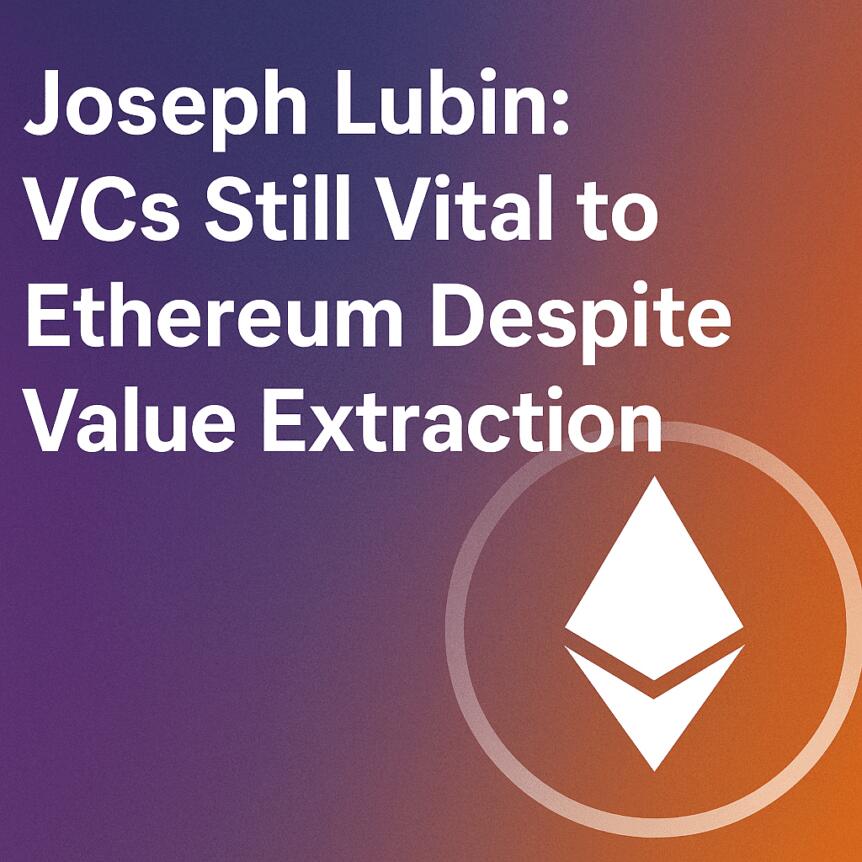Joseph Lubin Defends VC Role in Ethereum’s Growth Despite Criticism

Ethereum co-founder and Consensys CEO Joseph Lubin has weighed in on the ongoing debate about venture capital (VC) influence in the blockchain ecosystem, emphasizing that while concerns about centralization are valid, VC funding remains a vital part of Ethereum’s evolution. His comments arrive amid growing scrutiny over the role of investment firms like Paradigm in shaping the direction of major blockchain projects.
- Joseph Lubin reaffirmed the importance of VC funding for Ethereum’s continued development.
- He acknowledged Paradigm’s influence but argued it supports mainstream adoption.
- Lubin stated that decentralized on-chain funding alternatives will eventually replace VCs.
- Recent moves by Ethereum researchers to join Paradigm-linked projects have reignited centralization concerns.
- Paradigm’s new Tempo blockchain diverges from Ethereum’s open-source ethos by favoring a curated validator model.
Lubin addressed the topic on X, stating that firms like Paradigm primarily aim to extract value from the Ethereum and broader crypto ecosystem but also contribute to “progressing the systems towards rigorous decentralization.” He dismissed growing community concerns, saying there was “no reason for concern.”
His remarks followed the recent departure of two key Ethereum researchers, which sparked renewed discussion about the increasing sway of centralized investment funds over Ethereum’s development. Last week, longtime Ethereum Foundation researcher Dankrad Feist announced his move to Tempo, a new layer-1 blockchain designed for payments and stablecoins, built by Stripe and Paradigm. Former Consensys researcher Mallesh Pai also joined Paradigm earlier this year before taking a full-time position at Tempo.
Despite the criticism, Lubin viewed these transitions as signs of growth, suggesting that such moves reflect blockchain’s expanding integration with mainstream finance. “The gold rush of corpo-chains is validating for the traditional economy and signals our mainstreaming,” he wrote.
VCs still play a key role in connecting global capital to blockchain innovation
Lubin acknowledged that the crypto and DeFi sectors still depend on traditional venture funding to attract global capital. “We need VCs for now because they represent a comfortable bridge for the world’s capital to flow into our ecosystem,” he explained. However, he predicted that emerging decentralized investment platforms will soon make VCs obsolete.
Lubin argued that venture participation is essential for achieving “progressive decentralization” and building a secure global infrastructure for the blockchain economy. Meanwhile, Paradigm’s Tempo blockchain is introducing a payment-focused network governed by a curated group of validators—an approach more aligned with corporate control than Ethereum’s open-source model. Paradigm announced its plans for Tempo in September, citing the growing need for scalable global payment infrastructure.
This article was originally published as Joseph Lubin Defends VC Role in Ethereum’s Growth Despite Criticism on Crypto Breaking News – your trusted source for crypto news, Bitcoin news, and blockchain updates.
You May Also Like

Fiji Reaffirms Ban on Crypto Service Providers Over Financial Crime Risks

Fed forecasts only one rate cut in 2026, a more conservative outlook than expected

